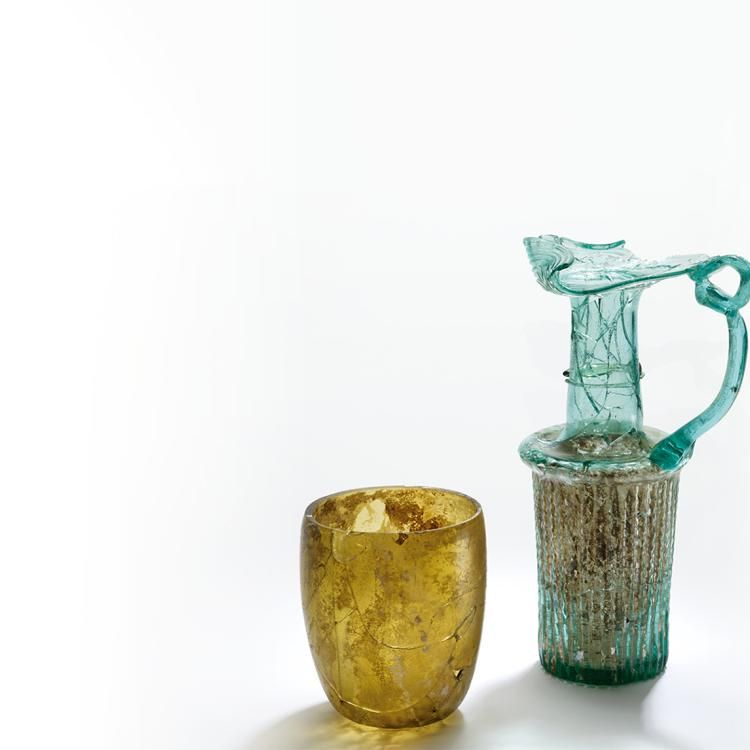Past exhibition
25 August – 23 October 2022
Room 3
Sign up to our emails and be the first to hear about upcoming exhibitions and events.
Browse past exhibition catalogues, books and gifts, available in the British Museum Shop.
On the evening of 4 August 2020, a massive stockpile of ammonium nitrate exploded at the port of Beirut.
The blast killed at least 218 people, injured 7,000 and displaced 300,000 as well as causing $15bn of damage. The immediate and lasting effects have been deeply traumatic, not just for Beirut's citizens but for all Lebanese people.
Just over 3km from the epicentre, at the Archaeological Museum at the American University of Beirut (AUB), a case displaying 74 glass vessels was destroyed, the shards of ancient glass mixing with those from the case and surrounding windows, seemingly inextricable. The story of the restoration of eight of these vessels is a powerful expression of the grief, solidarity and recovery of the people of Lebanon. A collaboration between the AUB and the British Museum, the journey of these shattered vessels has seen them transported to the Museum’s world-class conservation centre and, piece by piece, put together again.
Staff from the Archaeological Museum have worked with British Museum conservators for three months and the eight vessels, which are mainly Roman with a few Byzantine and Islamic examples, are now whole again. The conservation process saw the fragments carefully and laboriously sorted and the individual vessels sensitively and painstakingly reconstructed. The team purposefully made the joins between the shards visible and, though some of the missing areas were filled to support the surrounding fragments, others were left unfilled. These visible scars and missing fragments bear witness to the explosion and the determination of the people of Lebanon to recover.
Ranging from the first to the ninth century, the bowls, flask, beaker, jug and cup in this display collectively spoke of the rich cultural heritage of the wider region – and they told new stories through the scars they bear.
After their display at the British Museum, the vessels will now return home to Beirut.
Exhibition supporter
Supported by
These displays were made possible by the support of The Asahi Shimbun Company, longstanding corporate sponsors of the British Museum. The Asahi Shimbun is a Japanese leading newspaper and the company also provides a substantial information service via the internet. The company has a century-long tradition of philanthropic support, notably staging key exhibitions in Japan on art, culture and history from around the world. In addition to the Asahi Shimbun Displays, The Asahi Shimbun Company is a committed supporter of the British Museum touring exhibition programme in Japan, and funder of The Asahi Shimbun Gallery of Amaravati sculpture in Room 33a.
この展示シリーズは、大英博物館の長きにわたる法人スポンサーである朝日新聞社のご支援によって実現しています。朝日新聞は日本の主要な新聞で、朝日新聞社ではインターネットを通じた幅広い情報提供も行っています。同社には一世紀にわたる慈善活動支援の伝統があり、とりわけ世界の美術や文化および歴史についての主要な展覧会の日本国内開催で知られています。朝日新聞ディスプレーに加え、日本における大英博物館の巡回展、および大英博物館朝日新聞ギャラリーのアマラヴァティ仏教彫刻の展示にもご支援いただいています。










